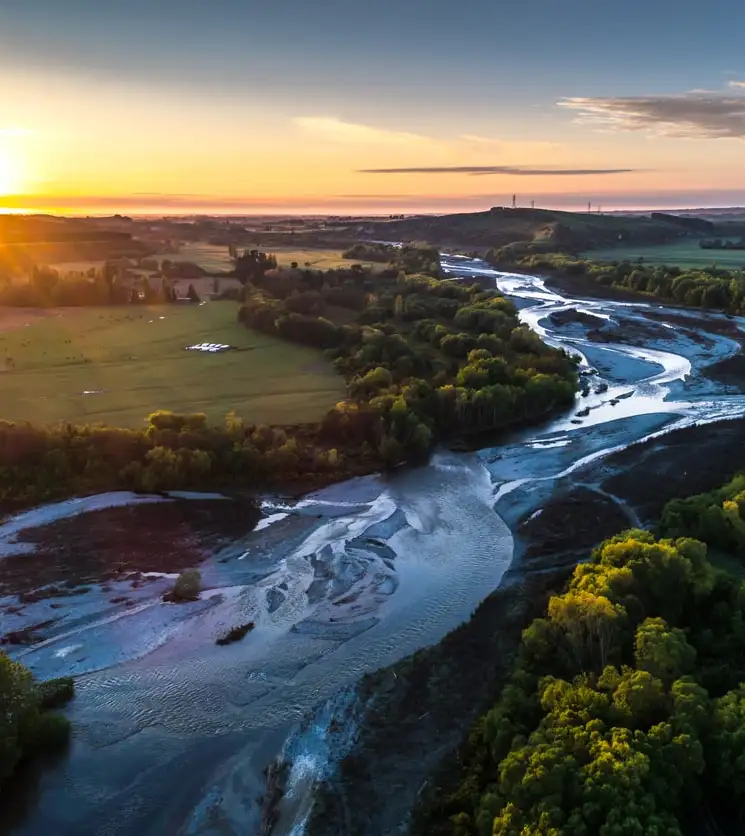Regional leadership key to national climate change adaption - Te Uru Kahika



4 August 2022
The National Adaptation Plan yesterday supports the central role of regional and unitary councils in preparing communities to adapt to climate change.
Michael McCartney, Regional Chief Executive Officers Group Convenor for Te Uru Kahika – Regional and Unitary Councils Aotearoa said the regional sector is hard at work on the complex challenge of responding to climate change impacts.
“Te Uru Kahika welcomes the National Adaptation Plan providing essential guidance we can draw on as we continue to work with iwi, communities, and industry to plan localised responses to climate change.
“When we talk about climate change impacts, we’re talking about at-risk homes and livelihoods, ecosystems, food production, water security, and infrastructure like flood protection and stormwater drainage. We only need to look to our neighbour Australia to witness how devastating climate induced events can be.
“When planning how we adapt to sea level rise and natural hazards, we must keep the wellbeing of our communities and the sustainability of our regions front of mind,” said Mr McCartney.
Across the country, many councils have escalated work and community engagement about local impacts. Fundamental to our engagement are conversations with iwi, residents, business, and stakeholders on the adaptation options available.
Mr McCartney said that many people are already seeing climate change affecting their daily life, whether that’s through damage to infrastructure and property, power cuts during extreme weather, increased evacuations due to fire or floods, and the economic impacts of droughts.
“We all want our people and places to be resilient. In recent years, Te Uru Kahika has ramped up its capacity to respond and prepare for climate change impacts and natural hazards.
“We have gathered technical information and data, we’re well informed about the needs of our communities through regular engagement, and we’ve worked quickly to get shovels in the ground across 55 projects that are building resilient river communities.
“With decades of experience in flood management we know that local government can deliver for communities. Since 1989, regional and unitary councils have done an exceptional job in providing affordable levels of protection with the support and funding from ratepayers.
“However, the challenge is growing as climate change increasingly shows its hand. Adaption and protection comes at a cost to communities – a cost we cannot shoulder alone.
“The numbers for investing in adaptation action such as flood risk reduction are compelling. With every $1 invested in flood protection schemes, there’s a $6 return on investment.
“This winter, we are once again seeing the benefits of flood protection infrastructure. We are also seeing growing pressure on that infrastructure, and this will continue to increase with climate change. For this reason, we again call on the Government to partner with Te Uru Kahika to deliver greater flood risk reduction and protection through long-term co-investment in the interests of Aotearoa,” said Mr McCartney.
Mr McCartney added that central government partnership to build regional resilience is essential and that good investment opportunities extend beyond flood protection and include investing in safeguarding water and natural systems that reduce the effects of climate change.
New Zealand’s 16 regional and unitary councils are charged with the integrated management of land, air, and water, supporting biodiversity and biosecurity, providing for regional transport, and building more resilient communities in the face of climate change and natural hazards.
Te Uru Kahika Chief Science Advisor Dr Chris Daughney said environmental science and local knowledge underpins all that the regional sector does.
“I am pleased to see the release of the National Adaptation Plan and the broad direction it takes.
“The Plan takes account of modelling from the NZSeaRise project (released in May this year) that incorporated the latest IPCC projections on global sea level rise and considered local vertical land movements to project the relative sea level rise at sites across Aotearoa.
“We know from this modelling that some communities are going to experience relative sea level rise much faster than previously thought.
“The National Adaptation Plan seeks to make more data, information, and guidance available to help communities and councils to work together to assess and reduce their own climate risks. Te Uru Kahika supports this move.
“While a major aspect of climate change adaptation is how we respond to risks along the coast, we also know from the environmental data that regional and unitary councils collect, that climate change impacts are broader than sea level rise alone.
“Wider regional adaptation considerations around land use, water availability, biodiversity, and biosecurity risks need to be explored further. We look forward to continuing to provide our expertise and local knowledge as we help Aotearoa adapt to climate change,” said Dr Daughney.